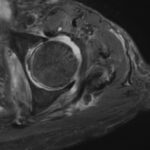The newest ICD-10 code set went into effect on Oct. 1 and includes more than 400 new and revised diagnosis codes and headers. In September, the ACR also proposed a new diagnosis code that will undergo a public comment period and consideration for inclusion in a future update.

Case Report: Hip Pain in End-Stage Renal Disease
Renal osteodystrophy is associated with chronic kidney disease (CKD) and its associated metabolic derangements, most commonly CKD stages 3–5. It is often subclassified into four histological subtypes, with definite distinctions unable to be made clinically. These four subtypes, which may only be differentiated by bone biopsy, include: osteitis fibrosa cystica, mixed uremic osteodystrophy, osteomalacia and…

The Rheumatologist’s Role in Sarcoidosis
Rheumatologists are uniquely positioned to care for patients with sarcoidosis. Here are insights into the condition, its treatment and more.

Let’s Define Undifferentiated Connective Tissue Disease
Undifferentiated connective tissue disease (UCTD) is a diagnosis given to patients who do not fulfill current classification criteria for named connective tissue diseases (CTD)—systemic lupus erythematosus (SLE), rheumatoid arthritis (RA), systemic sclerosis (SSc), or Sjögren’s disease—but who nonetheless have clinical signs and symptoms and serological evidence of autoimmune CTDs. In 1980 LeRoy et al. were…

The ACR and CHEST Release 2 New ILD Guidelines
Clinicians should not rely on glucocorticoids as a first-line treatment of SARD-ILD in patients with systemic sclerosis, according to a strong recommendation in a new ILD treatment guideline from the ACR and CHEST. The guideline is one of two addressing the screening, monitoring and treatment of patients with interstitial lung disease (ILD) secondary to systemic autoimmune rheumatic diseases (SARDs).

What Rheumatologists Need to Know About Antiphospholipid Syndrome
Antiphospholipid syndrome (APS) is an acquired thromboinflammatory disease that can have severe, sometimes catastrophic, effects on patients and their families. Our modern understanding of APS began to emerge in the early 1980s. At that point, it was defined as a condition characterized by thrombotic episodes and/or pregnancy complications in the presence of antiphospholipid antibodies (aPL).1…

Case Report: Persistent Pruritic Plaques in Adult-Onset Still’s Disease
Adult-onset Still’s disease (AOSD) is a systemic autoinflammatory disorder characterized by persistent fever at regular intervals, arthralgias or arthritis, rash, sore throat and neutrophilic leukocytosis.1,2 Significant elevation in ferritin levels is characteristic and tends to correlate with disease activity. Additional clinical features may include myalgias, lymphadenopathy, hepatosplenomegaly, serositis, myocarditis, abnormal liver function tests and development…

Case Report: Complicated Presentation Eventually Explained by Rare Syndrome
Pachydermoperiostosis (PDP), also known as Touraine-Solente-Golé syndrome or primary hypertrophic osteoarthropathy, is a rare syndrome that can be inherited as autosomal dominant, autosomal recessive, or sporadically. This progressive disease primarily affects males, who tend to have more severe features than females. PDP usually occurs during adolescence, often starting around puberty.1 The main clinical features are…

Mental Health in Rheumatology
Regaining a sense of control, limiting responsibilities and engaging in mindfulness can help rheumatologists manage their mental health needs. Rheumatologists should also address the mental health concerns raised by their patients. Here are insights from a psychiatrist/rheumatologist.

Curbside Consults: Experts Weigh in on Complex Rheumatic Conditions
In this ACR Convergence 2023 session, experts offered guidance on a selection of diagnostic & treatment challenges rheumatologists may encounter.
- « Previous Page
- 1
- 2
- 3
- 4
- 5
- …
- 35
- Next Page »